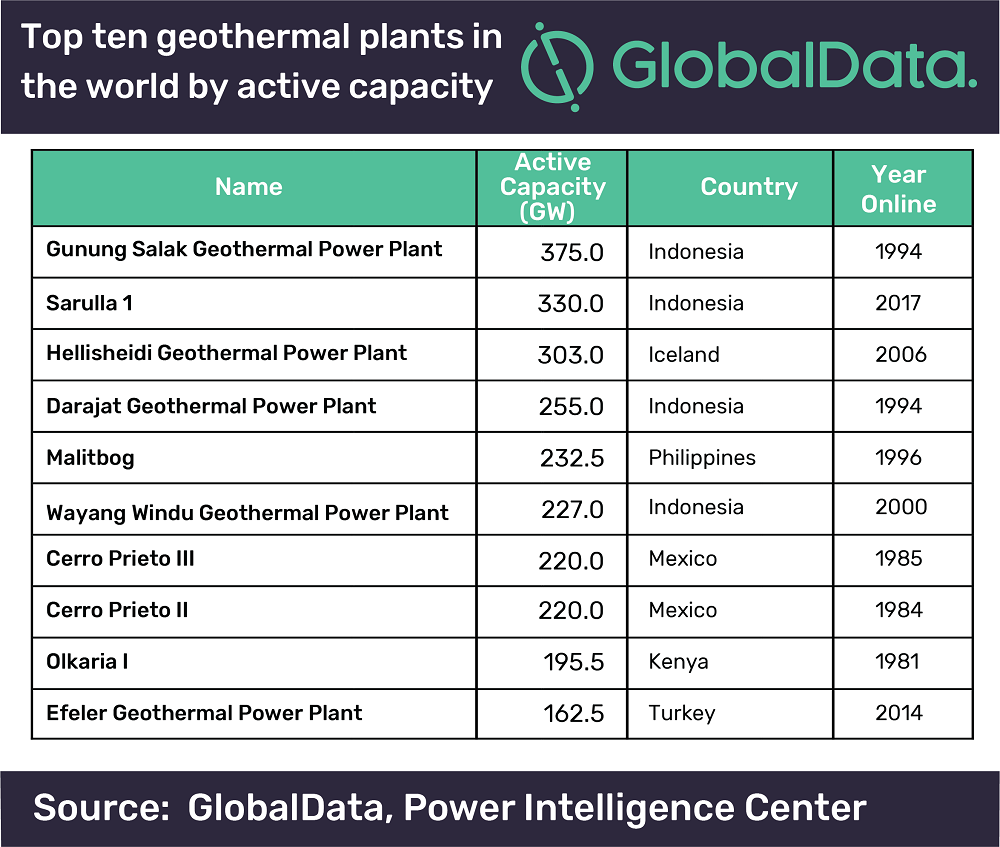
Indonesia is poised to become the leading market for geothermal energy by 2027, according to analysts.
The country is currently home to four of the world’s top 10 geothermal power projects, and in terms of overall output trails only behind the US – which lays claim to a quarter of the world’s installed geothermal capacity.
Business intelligence firm GlobalData reveals that forthcoming projects in Indonesia, currently at varying stages of development, will account for an additional five gigawatts (GW) of geothermal capacity in the region as they come online in the coming years.
Gunung Salak geothermal facility in Indonesia has world’s largest capacity
Analysis of the world’s leading active geothermal power plants reveals that Indonesia’s Gunung Salak facility, brought online in 1994, has the largest current active capacity of 375 megawatts (MW), while the Sarulla 1 project, launched only two years ago, follows closely with an output of 330MW.

Iceland, the Philippines, Kenya and Turkey are also home to significant geothermal capacity, while Mexico’s Cerro Prieto II and III facilities provide a combined capacity of 440MW to the South American nation.
GlobalData practice head of power Ankit Mathur said: “Mexico has the second-largest number of projects among the list of top 10 geothermal projects.
“However, Mexico’s geothermal market is likely to witness meagre growth until 2030, with only three to four projects in the pipeline in early development stage.”
Global investment in geothermal power to reach $4bn by 2023
While it may not grab as many headlines as other sustainable power sources like wind or solar, geothermal nonetheless makes a significant contribution to the global clean energy mix, and has the notable advantage of constant availability rather than being dependent on environmental conditions.
The IEA estimates that, in 2017, global geothermal power generation stood at an estimated 84.8 terawatt hours (TWh), while the cumulative capacity reached 14GW.
GlobalData analysts suggest an unfavourable policy regime, lack of access to finance and associated investments risks have proved significant barriers to the sector’s growth, with geothermal energy capacity having registered a compound annual growth rate of only 3.2% between 2000 and 2018.
Investment in the sector is expected to grow to $4bn by 2023, up from around $3.2bn in 2018.
Earlier this year, the World Bank green lit a $150m loan to Indonesia earmarked for investment in its growing geothermal power infrastructure, accompanied by a further $127.5m in grant funding from the Green Climate Fund and the Clean Technology Fund, two institutions supporting climate-friendly development.



